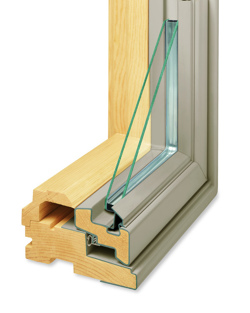I assumed the entire exterior was vinyl clad requiring no maintenance.
Vinyl clad wood windows problems.
One problem with vinyl windows especially darker color vinyl is sagging bowing and other deflection when subjected to high heat andersen states that fibrex stands up better against heat distortion than vinyl.
If you re scanning through the pros and cons thinking that you d like the low maintenance and weather resistant exterior that vinyl offers with the longevity of wood you should consider vinyl clad wood windows.
The beauty and strength of natural wood on the inside and the superior durability and.
Ply gem customers have reported the following problems with their vinyl clad windows.
Vinyl clad windows are built from wood but the exposed exterior parts are covered with molded polyvinyl chloride pvc to make them more weather resistant.
This combination of a weather resistant vinyl exterior the strength of a solid wood frame and the beauty of a wood interior performs well beyond what vinyl can achieve on its own.
Rather than having to replace the windows a few troubleshooting steps may help you to repair your vinyl clad windows without having to call in assistance.
Our home in iowa was built 12 years ago and has andersen vinyl clad windows.
Window types included in the 4500 series of jeld wen windows include.
Fibrex s heat distortion threshold is 173 f compared to vinyl s threshold of 163 f.
These products have wood frames wrapped with vinyl.
While vinyl clad windows look good and are also virtually maintenance free they may develop problems from time to time.
Deterioration of the wood substructure trim and finishes.
Water penetration and leakage into residential wood frame substrates.
Where andersen has innovated with vinyl is by using it as a protective cladding for its wood core windows.
As with other clad windows primarily aluminum and fiberglass clad you get the best of both worlds.
Heat distortion point.
Vinyl clad wood window vinyl exterior wooden interior.
This past fall we notice dark spots appearing on the inside of the windows about 2 3 inches up from the bottom and some black areas near the very bottom edge of the window.
Eventual lack of structural capacity for the windows to be anchored into the wood frame walls of a residence.

